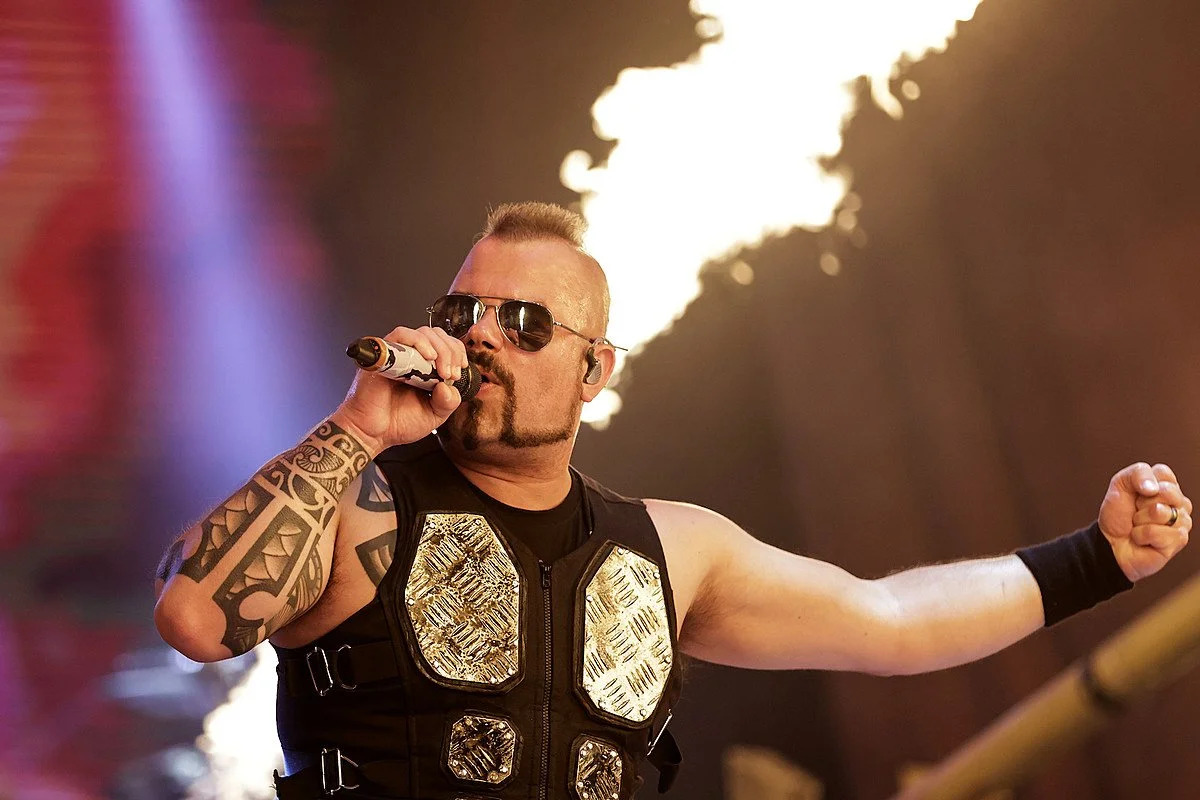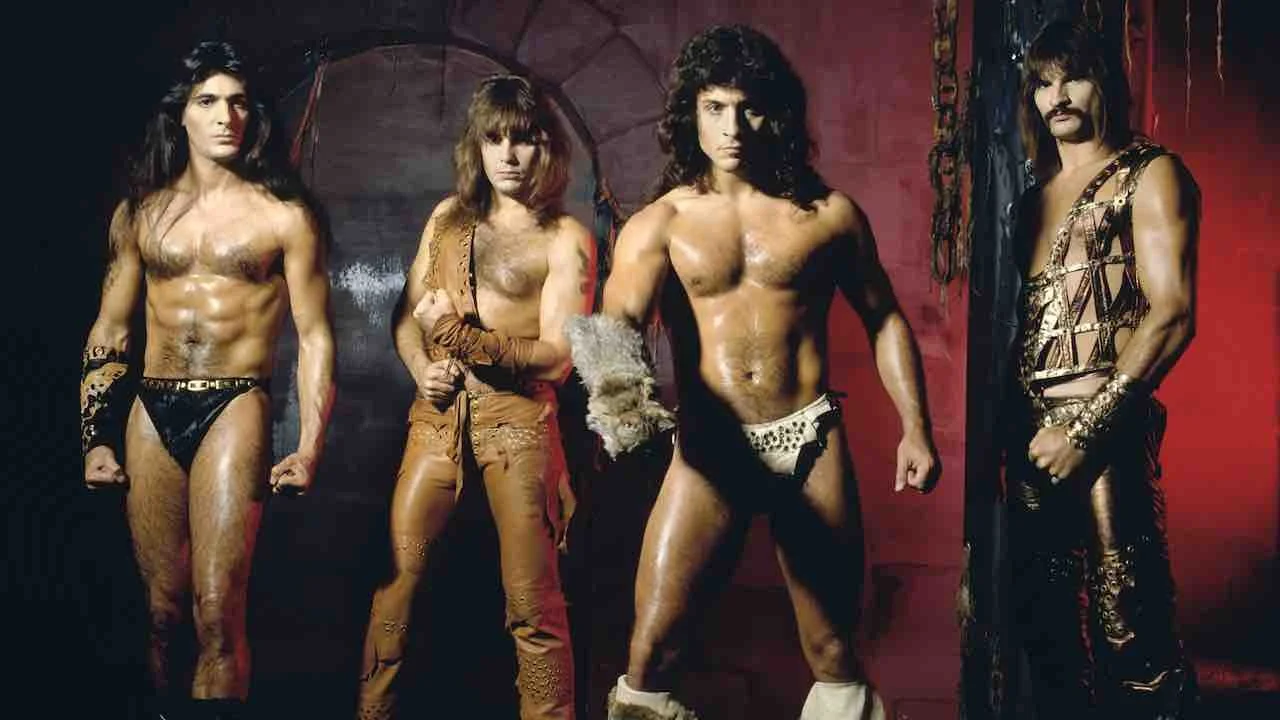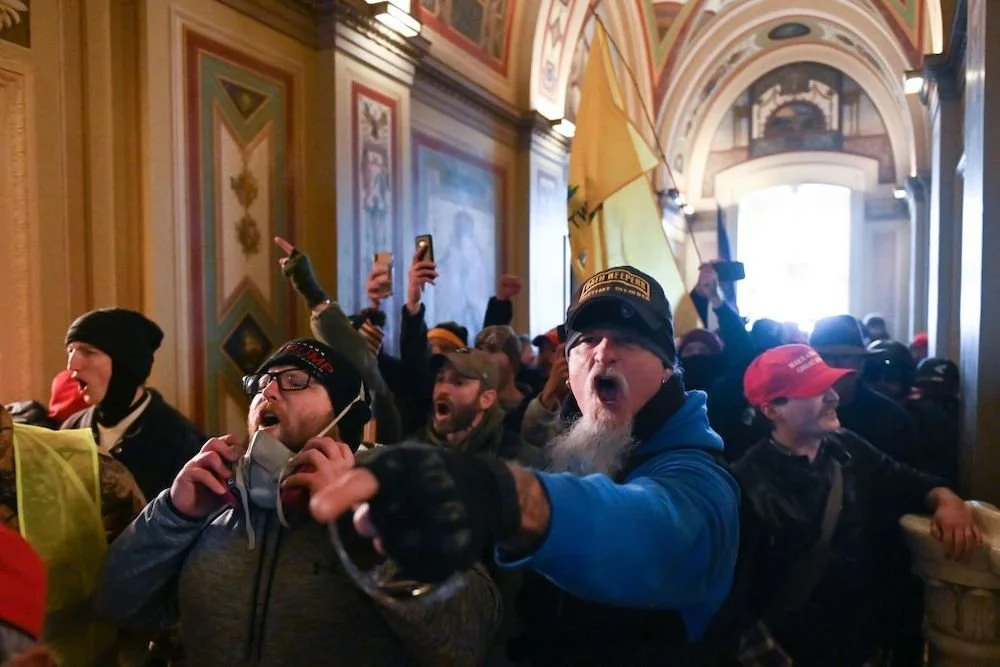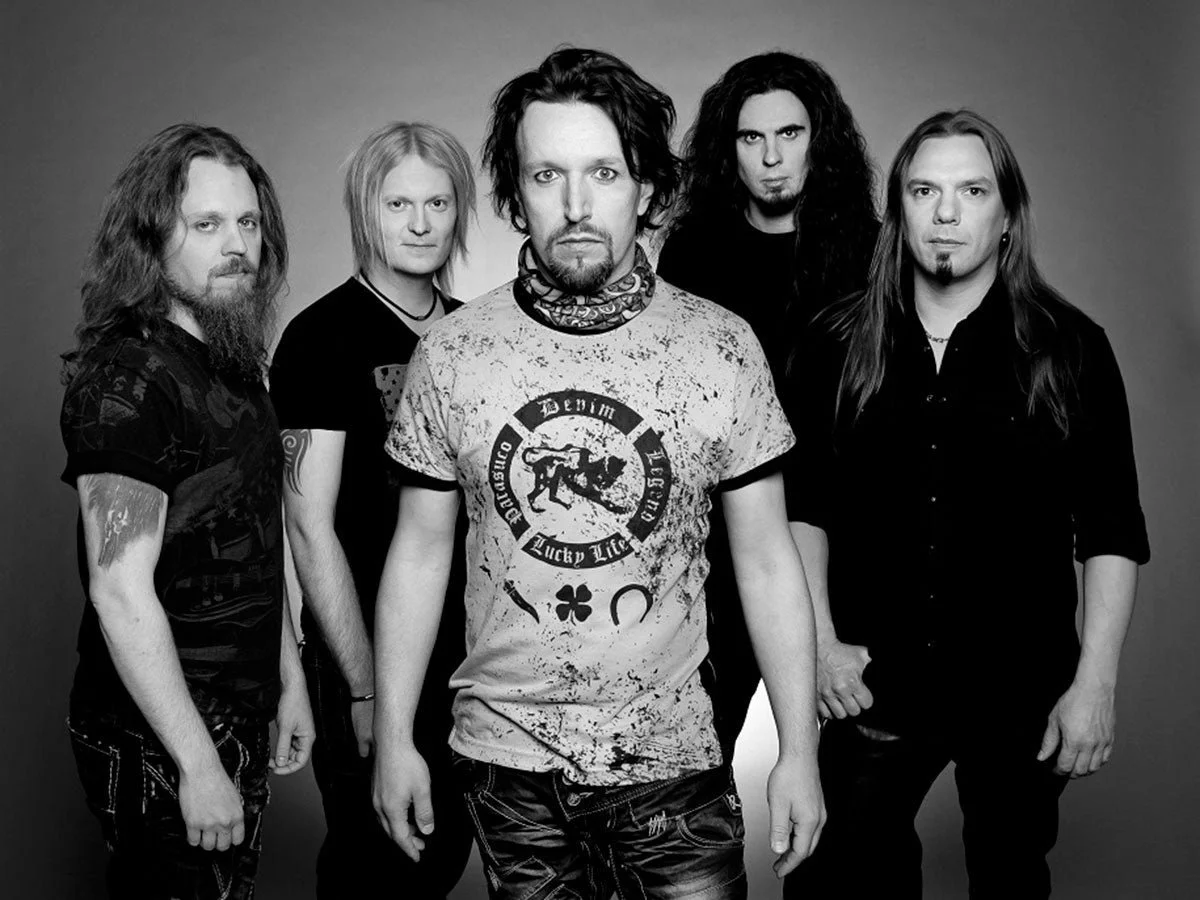A Subjective History of Power Metal
Metal has always been preoccupied with fantasy : demons, witches, magic, that sort of stuff. It’s a thematic cornerstone of early metal. Early seventies bands like Black Sabbath, Cirith Ungol or even Pentagram (to a degree) incorporated fantasy elements to their songwriting. It shouldn’t be surprising, because there are obvious similarities between the occult and the fantastic imaginaries. Both imply the existence of the supernatural, evil forces and whatnot.
The great oncoming divide among metal fans that would rage through the eighties would have bands positioning themselves on both sides of this supernatural moral struggle. Some of them would fight the beast, others would fight along with it.
Most bands will align themselves with Satan as he is the ultimate outsider and a symbol of rebellion, but not all of them. There also were knights in shining metal armor since the early seventies. At first, they were everywhere. But as metal matured, they were funneled into a single genre (well almost) where fighting dragons, saving the princess and living happily ever after is the norm. I am talking about speed metal’s righteous stepchild: power metal.
It’s another subgenre that evolved into something that isn’t going to evolve anymore, but unlike the ones we’ve covered already, it’s still alive and thriving today.
Ronnie James Dio and His Merry Band Of Righteous Gnomes of Light
The grandfather of power metal is old school metal icon Ronnie James Dio. He never played power metal himself, but he pioneered its imaginary and righteous moral stance. In Rainbow and Dio songs (a little less in his era of Black Sabbath), it’s OK to be the good guy. It’s OK to be the valorous prince that slays the fucking dragon. His music also had this bombastic, anthemic quality that made it friendly to sing along to. Metalcore legends Killswitch Engage are still playing their cover of Dio’s monster hit Holy Diver live and it never fails to send the crowd into a chanting and fist-pumping frenzy.
The clean, soaring high pitched vocals are another staple of power metal to which Ronnie James Dio contributed, but he wasn’t the only one. Up until the nineties or so, it was common for popular metal bands to have a more conventional, operatic singer. Bruce Dickinson in Iron Maiden and Rob Halford in Judas Priest and good examples. They were not power metal frontmen by any means, but you can trace every power metal frontmen style (or almost) back to them). In power metal, to sing well isn’t the only important thing. You have to perform your lyrics like it’s a goddamn stage play, like Dickinson does.
Embodying a character is not mandatory, but it’s a plus and you can keep it simple like Sabaton’s frontman Joakim Broden.
So, who was the first power metal band? It’s hard to say because it’s a style that emerged out of speed metal’s evolution into dual directions (the other would be thrash metal), but I believe the first band to fully embrace the moniker and the untold code of conduct that come with it is Germany’s Helloween. There were other bands like Savatage and Running Wild that showed power metal characteristics before Helloween, but they were not the entire item. They were bands whose ideas and innovations influenced the shaping of a subgenre, but Helloween was the first finished product.
Purists will tell me Blind Guardian came before Helloween, but they were a speed metal band at first. They didn’t even have the same name. They were called Lucifer’s Heritage then. It’s not until they heard Kai Hansen squeeze his balls into oblivion that they went: “Oh”.
The Curious Case of Manowar
American-Italian weirdos Manowar were formed seven years before Helloween and pioneered power metal elements more or less in the same way Lemmy and Motörhead pioneered speed and thrash metal. What they did (and still do, I believe) doesn’t check any box per se, but their influence is undeniable.
Their goofy, jacked, oiled up Conan The Barbarian looks sure gave the green light to later bands to cosplay in their videos and live performances. Although their sound is too raw and straightforward to be considered power metal (at least in their first decade of existence. I’m no late-era Manowar scholar), their emphasis on speed and soaring vocals was definitely before its time.
Manowar’s dedication to looking silly and going balls out gave power metal the permission to exist, but it was not a sound yet when they were at the height of their popularity. That came later. People always claim that soaring vocals and high flying guitar solos mean power metal. It’s not true. It’s just part of the equation.
Helloween, Hammerfall, Rhapsody (Of Fire) and Other Corny Europeans
Although it isn’t exclusive, power metal is primarily a European phenomenon. What’s up with that? Swords & sorcery dorkiness (and I meant that in a complimentary way) knows no frontier, but Europeans might be a little more attached to these foundational medieval tales since it happened in their backyard. In Germany, land of Helloween, traditional romances are a thing as those of you who have read about the twentieth century might know.
So, I’d claim the first true blue power metal record was Keeper of the Seven Keys: Part 1, released in 1987. Kai Hansen had created his own engaging lore and narrative, to which there was a different response than to your usual speed metal record. He also stressed the idea of playing fast. A lot faster than your speed metal record normally required to and triggered this arm’s race to play faster and more over the top music with bands that would take up the genre. A competition that is and has always been crucial to metal’s evolution.
Who were these bands? The aforementioned Blind Guardian. Sweden’s Hammerfall (formed in 1993), Finland’s Stratovarius (formed in 1985 as a speed metal band), Italy’s Rhapsody (formed in 1993), Finland’s Nightwish (formed in 1996), Kai Hansen’s other, marginally less important band Gamma Ray and countless others. The thematic connection between these bands in their fantastic imaginary, their emphasis on speed and orchestral instrumentation and this very peculiar, almost anime’esque aesthetic even if it sometimes didn’t flatter the physique of the musicians.
This was a countercultural moment in metal even if it wasn’t as sexy as counterculture usually is. But it was sexy to some. What makes power metal successful is that it had an already built-in market of people who bought into medieval, sword & sorcery and other worlds in general. Experiencing these universes in fist-pumping, life-affirming music was a revelation to them. The fact that these songs were performed by (most times) sexy, not totally real looking people really fed into the enthusiasm for the genre.
But power metal wasn’t done evolving.
But Americuh?
There were two big, early American power metal bands: Kamelot and Iced Earth. Yes, the same Iced Earth whose founding member Jon Schaffer is in jail for invading the Capitol like a jackass.
This is an interesting case because who was the most important band between the two depends on who you ask. A lot will say that Kamelot had the best run as their style is more universal and therefore more popular with the European audiences and a lot will say Iced Earth is the most important because their style was darker and grittier than European power metal bands. They have "invented American power metal" even if they’re pretty much the only band to ever play it. It’s identifiable by its slower tempo, grittier production and tenor vocals.
American power metal isn’t marginal because nothing American ever is, but it has mostly shaped itself around the European sound. Of course there are other bands to check out: Virgin Steel, Sacred Oath and Benedictum to mention a few, but you’ll have a hard time finding pure power metal from the US. A lot of band use elements like high flying solos and soaring vocals, but it’s often part of a symphonic hybrid of something.
Although it’s fun to say that Americans aren’t the best at something, I do legitimately thing they’re afterthought in power metal because they sincerely don’t give a fuck about it.
From Sonata Arctica to Sabaton: epicness at all costs
Another extremely important band in the history of power metal is Sonata Arctica. They are also perhaps my favorites in this subgenre along with Rhapsody. Tony Kakko and his boys were influenced by this fantasy imaginary, but it’s not what they wanted to talk about. Kakko had another epic topic on his mind: relationships. Because what is more epic than falling in love, right?
On the band’s first record Ecliptica in 1999, Kakko used every trick in the power metal book to turn everything into a metaphor for relationship. He wrote songs like My Land and Kingdom for a Heart that used a fantasy backdrop to discuss deeper topics and others like Mary Lou or Letter to Dana who straight up went into other topics like teenage distress and the distress of finding your ex on the cover of a porn magazine. It was a brilliant, catchy record and from there, power metal kind of exploded thematically.
It became less important to slay the dragon literally, as long as you slayed it metaphorically. Plenty of bands emerged from this spiritual rebirth of the genre: pirate-themed Scots Alestorm, British guitar wanking gods Dragonforce, Germany’s Powerwolf, Sweden’s history buffs Sabaton and countless others who are considerably less interesting and less successful.
As long as you’re playing epic music with wild solos and plenty of dragons to slay (real or metaphorical), who gives a fuck about the rest? Right? This is what power metal stands for in 2023. Bunch of dudes and dudettes going at breakneck speed trying to transcend the banality of contemporary living. It’s a fun and melodramatic genre that feels good to exteriorize your withdrawn cornball to. Here are five songs to help you understand the musical and aesthetic essence of the genre.
Helloween - I’m Alive: You can hear the speed metal grit in the guitar still, but this galloping drum and this infectious singalong chorus make it undeniably
Sonata Arctica - Kingdom for a Heart: Sonically similar to I’m Alive. The elements of the genre are a lot more assured and flow together better, though. Kingdom for a Heart knows what it’s trying to be.
Rhapsody - Dawn of Victory: A more symphonic take on the genre with neoclassical elements. Also it’s a lot more bombastic. It’s not just fast.
Iced Earth - I Died For You: Hits different, doesn’t it? These are some manly-ass feelings.










